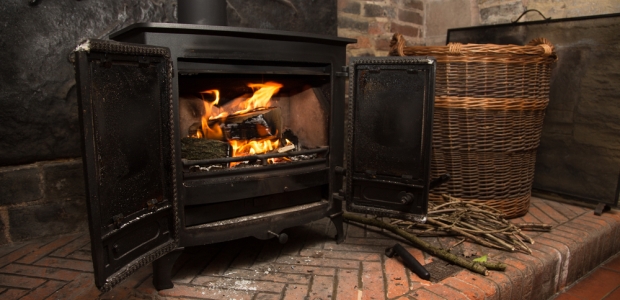
Red Cross Offers Home Heating Safety Tips
Almost half of the families in the United States use an alternate heating source, according to ARC, although the supplemental heating sources can be dangerous if not used properly.
With winter fast approaching and colder weather settling in for some parts of the northern United States, may people begin using space heaters, fireplaces, and coal or wood stoves to warm Noting that heating a home is one of the leading causes of home fires, the American Red Cross posted tips on Nov. 14 to help people heat their homes safely.
Almost half of the families in the United States use an alternate heating source, according to ARC, although the supplemental heating sources can be dangerous if not used properly. Its safety tips are these:
1. Never use a cooking range or oven to heat your home.
2. Keep all potential sources of fuel, such as paper, clothing, bedding, curtains, or rugs at least 3 feet from space heaters, stoves, or fireplaces.
3. Never leave portable heaters and fireplaces unattended.
4. Turn off space heaters and make sure any embers in the fireplace are extinguished before going to bed or leaving home.
5. Place a space heater on a level, hard, nonflammable surface (such as ceramic tile floor), not on rugs or carpets or near bedding or drapes.
6. Keep children and pets away from space heaters.
7. When buying a space heater, look for models that shut off automatically if the heater falls over.
8. Keep fire in your fireplace by using a glass or metal fire screen large enough to catch sparks and rolling logs.
9. Have wood and coal stoves, fireplaces, chimneys, and furnaces professionally inspected and cleaned once a year.
10. Check electrical appliances before you leave home.
11. Do not leave food cooking on the stove.
12. Blow out candles before going to bed.
13. Do not overload electrical outlets.
ARC also recommends making a fire escape plan and ensuring all household members know two ways to escape from every room of the home; setting up a meeting place outside in case of fire; practicing escaping from the home at least twice a year and at different times of the day; and teaching household members to stop, drop, and roll if their clothing should catch on fire. Also, install smoke alarms on every level of your home, inside bedrooms, and outside sleeping areas. Check monthly that smoke alarms are working properly by pushing the test button, replace batteries in smoke alarms at least once a year or as directed by the manufacturer, and replace smoke alarms every 10 years.
ARC responds to nearly 64,000 disasters every year, and most of them are home fires. It started its Home Fire Campaign in 2014 with the goal of reducing the number of home fire deaths and injuries by 25 percent. As of Nov. 1, 2017, a million free smoke alarms have been installed across the country and 285 lives have been saved due to the efforts of all those who have participated in the campaign, ARC reported.